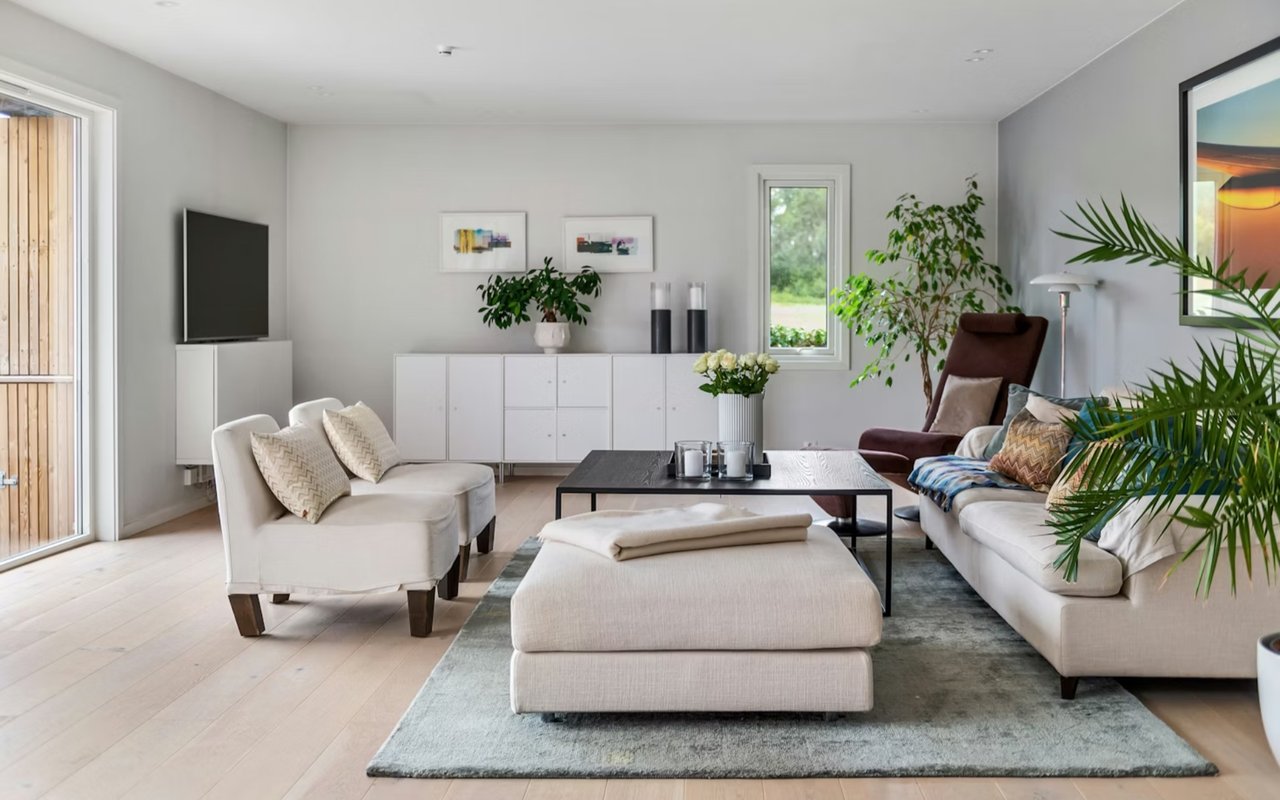Picture this: you’re walking your clients through a showing on a listing you just placed on the market. Your outfit is on point, you were on time, and the house is spotless. But for every question your clients ask, you don’t have the answer. You looked over the specs on the way there, but you really haven’t researched the property in-depth.
This is the nightmare that I’m going to help you avoid, because no amount of hair gel and bleached-teeth smiling is going to distract your clients from realizing that you just don’t know your stuff.
The greatest asset in how you present yourself to potential buyers is having a firm, all-encompassing knowledge of the market. That means not only knowing what other properties are selling but being able to point out the finer aspects of the home in great detail. Before I even get into each of the layers of this, it has probably become very clear that this type of undertaking involves a good deal of effort. You would be correct! It does. You don’t have to learn everything about your town or city overnight; Rome wasn’t built in a day either. But just like you’re committing to the real estate industry, make a similar commitment to doing the research as you go along. The difference it will make in your commissions is a very sweet payoff, literally.
Your goal is to become a market guide to both the sellers and the buyers. You do that by showing them you’re a walking encyclopedia of the area’s history and current climate, able to educate them, if necessary, on recent sale prices, and offer helpful recommendations on how to price or update the home prior to listing. There will be hundreds of agents that want the listing for the commission, so you have to show why you’re an asset worth paying for.
The Montcalm property works extremely well in highlighting the significance of learning your market, so I will reference that.
Geography
If you live close to the town or city that you’re looking to represent– which you should be for commuting, convenience, and credibility reasons– then you should have a pretty good idea of the layout of the area. Of course, it’s most ideal if you’ve grown up in the area or live there currently in order to be able to reference personal experience. In my case, I am born and raised in Los Angeles and could say that I had always wondered what was behind the Montcalm home’s gates. If I was curious, I knew others would have felt the same appeal and intrigue– a first clue in figuring out how to best sell the culture of the home.
Even if you think you’re an expert, take out a map. You want to make sure you have a visual of where the neighborhoods are in relation to one and know which zip codes offer geographic appeal. In other words, what neighborhoods have waterfront properties or access, including riverfront, lakefront, and Get to know the neighborhoods that are perhaps densely wooded, mountainous, or very spread apart for the nature-loving client that craves a quiet retreat. On the other hand, where can the city transplant be in walking distance to a downtown area in suburbia? Where is development taking place?
The Montcalm property was located in the eastern part of the Hollywood Hills, which made its 7-acre plot size extremely rare and desirable. That much acreage simply does not exist anymore in that section of Los Angeles– a fact that instantly gives me an idea of what we’re dealing with in terms of price, before I even set foot inside the house. The location also meant proximity to the highly desirable Mulholland Drive and gorgeous views.
I knew from the size of the land alone that I could make a sale pretty easily to a developer, but the executor of the estate was clear that he would prefer a buyer who appreciated all of the character and history preserved within the home. Well, to sell the home to a buyer based on its intricacies, I’d first have to know them myself.
Live & Breathe the Home
As I alluded to earlier, truly knowing a home well enough to properly present it involves much more than reiterating the spec’s that the buyers already read on the listing page. These are the rational or the hard facts that may generate the initial interest in the property, but don’t close a deal on their own. In Montcalm’s case, these would be the great square footage (4,712 ft2), unheard of plot size (7 acres), and a pretty fancy neighborhood. Right off the bat, I judge the land value to be around $5-6 million. Because of the emotional details, however, I know I can get the seller much more.
There is a story behind every house, and you uncover it in the emotional details. As you might imagine, these are the aspects of the home that trigger an emotional response from the buyer and makes them willing to pay more. A common emotional detail for Los Angeles is name-dropping a celebrity that owned the home or partied there. Occasionally I’ll represent a property that was used in a noteworthy photoshoot or as a filming location. Montcalm, as it turns out, was owned by silent film star John Bower, and later by the Oscar-winning composer of Ben-Hur. Throwing that out there on a showing adds instant pedigree, but it’s unfortunately not something you can rely on.
Maybe you don’t work in an area frequented by Hollywood, but that doesn’t exclude you from applying the same tactic in your approach. Get a little creative. Use the wizarding world of Google to find out if your listing resembles a home in a movie, or looks like it would make a certain popular celebrity or character feel right at home. Tell me you don’t think of Will Ferrell’s Anchorman character Ron Burgundy every time you see a home office or study with rich mahogany and leather bound books.
You want to create a narrative for each home, and possibly even each buyer. The more you pay attention to the hobbies and interests of your clients, the more you can weave in their details to fit the home. Try to avoid being the Real Estate Agent that pressures a young couple into picturing the spare bedroom as a nursery, and go with what you know they definitely want.
Montcalm was loaded with emotional details, from the Prohibition-era secret alcohol storage room to the dumbwaiter and original 1920s tile. I have seen buyers pay top dollar to install antique tile to a home after purchasing, so for the right buyer, it’s going to mean a few extra dollar signs that these rare design components are already present.
Original tile from the 1920s– something I have seen other clients pay to have installed after purchasing a home.

Unique spiral staircase made with cast iron (quality + antiquity)
Original dumbwaiter

Secret Prohibition-era alcohol storage room
Signatures and drawings from 1920s-era party guests, including Charlie Chaplin

Some of these details would be apparent to anyone taking a tour of the house, but a few required the design and architecture research I have been putting in since childhood.
History & Trivia
The current owners will be knowledgeable about the home’s but plan on doing some digging on your own. The following is a list of what you want to know before ever showing a house:
- When the home was built
- Why the home was built
- Who were the previous owners
- Major renovations to the home– what kind & when
- Any criminal activity that took place– you will gain their trust by being upfront
- Any natural disasters that had an effect on the home, including tornadoes/hurricanes/flooding.
Being able to answer the above questions will convey a sense of preparedness and trustworthiness. They may not be the answers that a buyer is looking for, such as explaining a lack of renovations or unrepaired water damage, but being honest will earn you the credibility you need to then turn around and suggest how the new buyers can improve the property– and for how much money. The more you know about interior and exterior design, the better you’ll be able to help your clients envision the house their home.
Montcalm had a lot of positives in the history and trivia department. It was built at the start of the Hollywood film industry we know today, for a reputable figure, and hosted one of the most recognizable names in the business: Charlie Chaplin.
Interior Design, Exterior Design, & Architecture
Montcalm was a little lacking in renovations, so I made some recommendations to the seller on crucial improvements. Before showing the house, I suggested that we reinvigorate the parched landscaping and stage the interior so that it looks like it had been better maintained. The executors of the estate agreed to spruce up the property and put in $100,000 based on my opinion that this investment would have a much larger return on the sale price. The results were incredible.


�

The exterior details are probably not going to be the deciding factor in a sale, but they are the first impression that a buyer has. Because of that, it’s also one of the first impressions that you get to show that you’ve done your homework. Every million dollar home has landscaping, and you should be able to name the shrubberies and vegetation with ease. Impressive exterior design is a crucial component in any million dollar listing; it’s the decorative icing on the cake that helps buyers feel like they’re paying for the real deal. Without it, buyers will enter the home with an instant distaste. At the Montcalm home, I knew the neglected lawn, or lack thereof, around the pool would be major marks against it.
Having some knowledge of vegetation or landscaping can help you in multiple ways. It can become part of your story-building with emotional details if you can point out a hundred-year-old tree that’s been around since the home was built on a former apple orchard. It can also aid you in becoming the valuable guide you need to be if you can suggest moving the location of the pool, or adding in a row of holly trees to block the view of the busy street.
A solid understanding of interior design can truly make or break you. If you haven’t already, pick up a book and start reading as much as you can about architecture and household design. You want to be able to reference architects and cultural origins of the home’s structural features. A buyer may not like the spiral staircase of a home, but their opinion can flip flop if you’re able to say that this particular staircase was inspired by the very famous Tulip Stairs in the Queen’s House in London. Become fluent in the different types of ceiling molding and countertop stone. Be able to spot custom finishes and quirky perks, and figure out how to use them. You don’t want to advertise a state-of-the-art security system and then not be able to demonstrate its functions.
The furnishings will not match every prospective buyer’s taste, but at the very least, your explanation of them will show how much extra money was put into the home. If a buyer is completely turned off by the decor, ask them how they’d redecorate. By engaging in this type of discussion, the buyer is almost forced to picture the redesign possibilities. You make the property more relatable, and learn what your client is really looking for in a home.
Montcalm had so many unusual details that it was hard for some buyers to see themselves living there. That’s absolutely because it also means that the right buyer will be so enamored with the property that they will come close to asking price. There was definitely some extra effort involved, but I was able to close a deal for $6.250 million. It was a little lower than the asking price of $6.995 but broke records for sale price in that neighborhood.
Knowing your market is a multi-faceted endeavor that takes time, research, and experience, but it will make the simple deals simpler and the complicated deals manageable.















